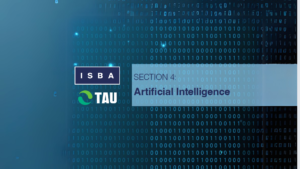“AI buying agents are going to be directing upwards of 80% of digital media buys by 20230”
That was the view of Ben Hovaness, Chief Media Officer at ad buying firm OMD in an interview with the Wall Street Journal published in March 2025.
The precise figures and dates may be debatable, but as AI continues to reshape media planning and buying, we believe that one of the most transformative developments is the rise of AI agents. So what do we mean by agents? AI agents are autonomous systems capable of making and executing decisions without constant human intervention. Unlike traditional AI tools that provide insights or automate individual tasks, AI agents operate independently within defined objectives, continuously learning from real-time data and adapting their strategies accordingly.
These agents function within structured workflows, dynamically adjusting campaigns based on performance metrics, audience behaviour and shifting market conditions. AI agents can autonomously allocate budgets, select optimal channels, negotiate ad placements, and optimise bids in real time. The result is an intelligent, self-optimising media strategy that reduces inefficiencies and enhances return on investment.
Advantages of AI Agents in Media Planning and Buying
The integration of AI agents into media planning and buying presents several key advantages:
- Automation of Decision-Making – AI agents remove the need for constant human intervention, handling complex tasks such as bid adjustments, audience segmentation, and budget allocation autonomously.
- Real-Time Optimisation – Unlike traditional media planning processes, which rely on scheduled adjustments, AI agents react instantly to performance data, ensuring that campaigns are always optimised for maximum effectiveness.
- Cost Efficiency – AI-driven automation reduces operational costs by minimising wasted ad spend and optimising budget distribution across channels and audiences.
- Scalability and Personalisation – AI agents enable large-scale, hyper-personalised advertising by continuously refining audience targeting and creative strategies based on live data.
- Seamless Multi-Channel Coordination – AI-driven workflows integrate various media channels, ensuring consistency and synergy between programmatic, social, search, and traditional media buys.
Getting started with agents
The strength of agents is in their ability to carry out specific tasks. When thinking about how to implement agents effectively within your processes, the first step is what we refer to as “chunking up the elephant,” breaking down the vast and complex process into specific, individual specific tasks.
Then consider where the risks arise and where you need to have human involvement. While there will be commonalities in the process, the process should ideally be customised to the needs of each business. Crucially some ways of planning media have more or less risk in terms of reputational risk (and benefit), but also risk of performing vs not performing.
For example, some advertisers like to dedicate a percentage of the media planning budget to testing new channels. In this situation advertisers may need more human involvement to check the suitability of the channels selected in terms of the context and the audience placement, compared to those who are only working with channels where results are more predictable.
For further tips and advice in considering vendors and third party solutions read our post here
Agentic Workflows for Media Planning and Buying: An Example
The following is an example of how AI agents might operate within media planning and buying in an agentic workflow:
- Campaign Briefing and Goal Setting: A marketing team inputs objectives, KPIs, and budget constraints into an AI-powered planning interface. A custom LLM refines these inputs by analyzing historical performance and industry benchmarks.
- Data Aggregation and Analysis: AI agents pull structured and unstructured data from a centralized data lake, incorporating real-time market trends, customer behavior, and past campaign results. Machine learning algorithms detect patterns and predict optimal strategies.
- Automated Media Plan Generation: Using the insights derived, the AI agent generates an optimized, multi-channel media plan. The custom LLM refines audience segmentation and targeting criteria, while generative AI produces multiple creative variations tailored to different demographics.
- Real-Time Execution and Optimisation: AI agents activate the media plan and continuously adjust bids, placements, and audience segments based on live performance data. Machine learning algorithms ensure predictive budget reallocation to high-performing channels.
- AI-Driven Creative Adaptation: Generative AI dynamically modifies ad creatives in real time, personalising messaging and imagery to maximize engagement across different audience segments and platforms.
- Anomaly Detection an Alerts: The AI agent detects anomalies, such as underperforming ad sets or cost spikes, triggering automated corrective actions while notifying human supervisors for high-impact decisions.
- Performance Reporting and Learning Loop: Post-campaign analysis is conducted using machine learning models, which provide insights into what worked and why. These findings are stored in the data lake for future optimisations, and the custom LLM refines future campaign strategies based on the learnings.
While AI agents offer significant advantages, their use in media planning and buying also introduces potential risks
Risks and Mitigations for working with AI Agent
| Risk Area | Risk | Mitigation |
Loss of Human Oversight | AI agents may make decisions that are data-driven but misaligned with brand values or overarching strategy. | Implement human-in-the-loop systems where major decisions require approval. |
| Bias in AI Decision-Making | AI models trained on biased data can reinforce disparities in ad targeting. | Regularly audit AI decision-making processes and ensure diverse, representative training data. |
| Data Privacy and Compliance Risks | AI agents rely on large datasets, which may lead to regulatory challenges. | Establish strict data governance protocols and ensure compliance with data protection regulations. |
| Over-Reliance on Automation | Excessive automation can reduce creative flexibility and strategic differentiation. | Use AI to complement, rather than replace, human expertise in media strategy. |
In conclusion
There’s no doubt that AI agents are going to reshape the media planning and buying landscape. However, the opportunity here isn’t simply about replacing manual work: it’s about making the entire ecosystem smarter, faster, and more responsive.
We’re entering an era where planning and buying become less about set-and-forget spreadsheets and more about adaptive, living systems that learn and evolve. That’s a good thing—but only if we stay in control of the goals, the governance, and the guardrails.
So yes, by 2030, most of your media buying may well be handled by autonomous agents. But the real question is: will those agents be aligned with your strategy, your values, and your ambitions? The answer depends on getting the details right in developing workflows and implementation frameworks. That requires a deep understanding of the nuances of media planning and buying and how each business or team approaches that.
Get the foundations right now—identify the tasks, define the risks, embed human judgement where it matters—and you’ll be ready not just to adopt agentic AI, but to lead with it.



